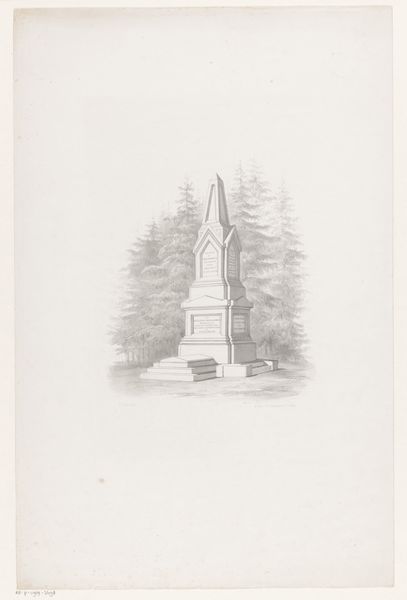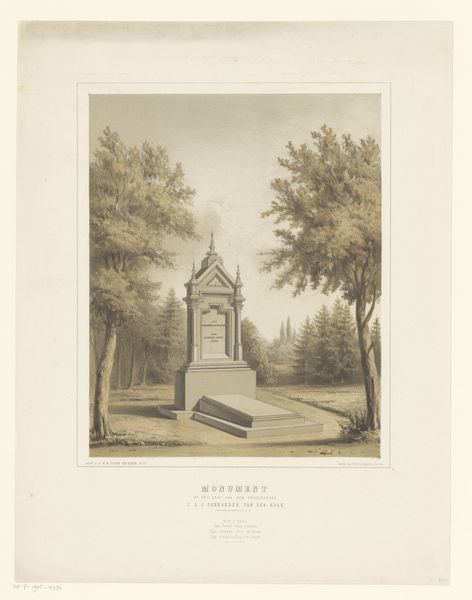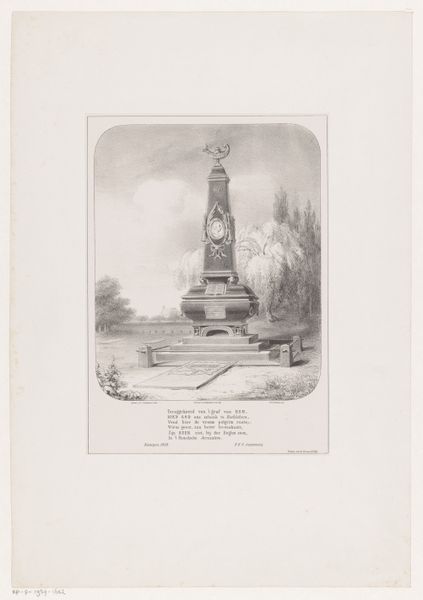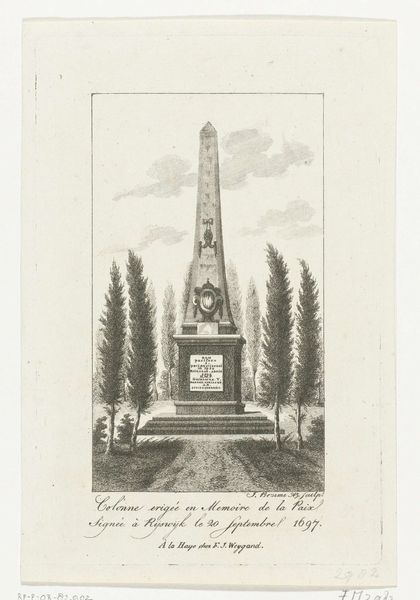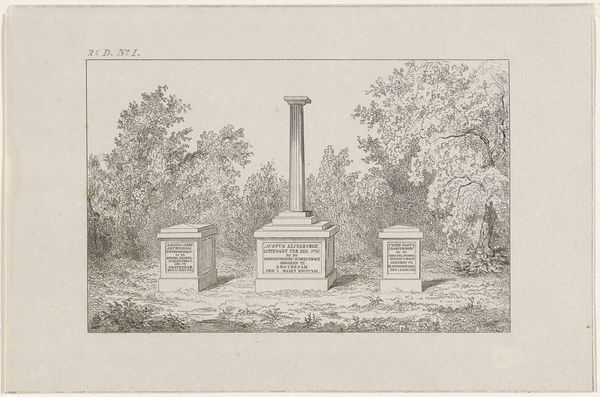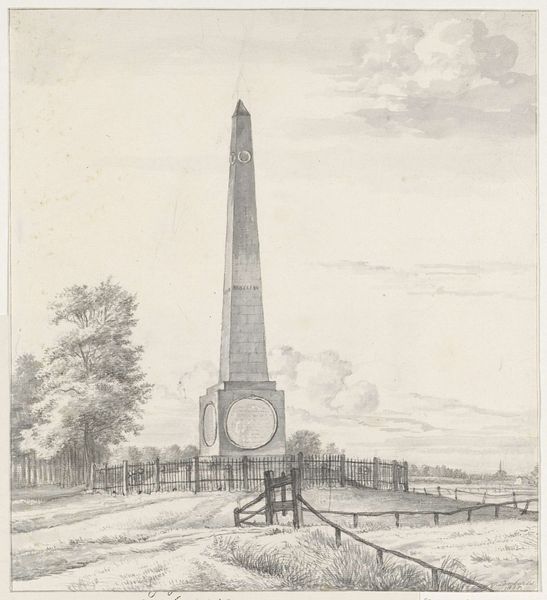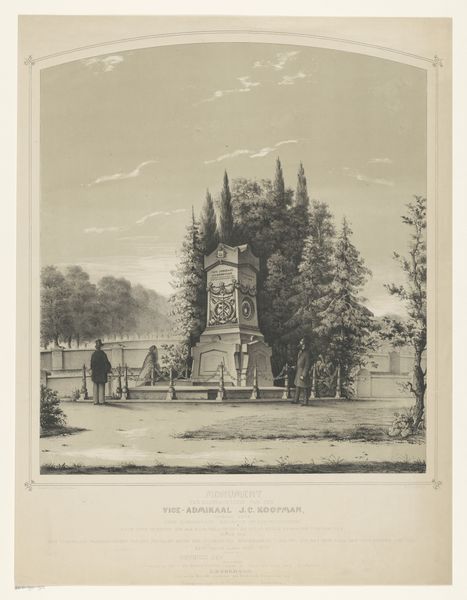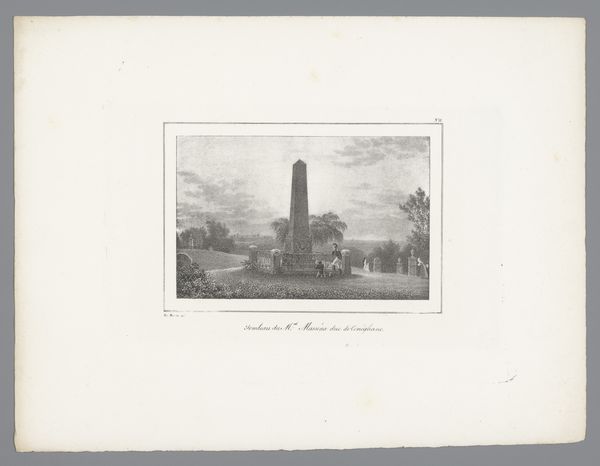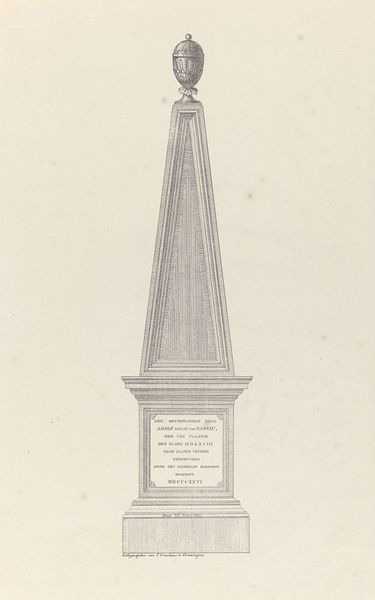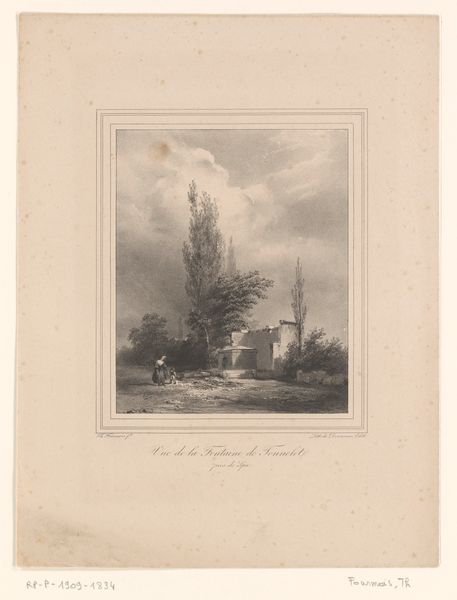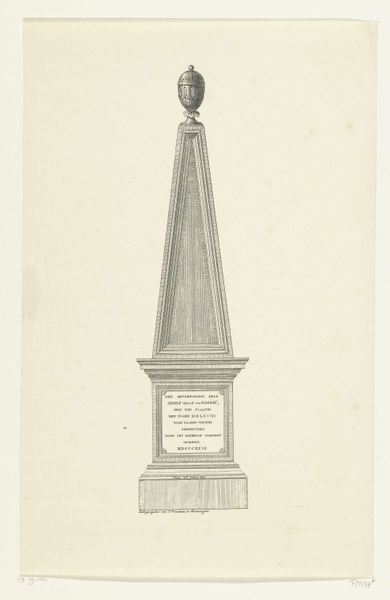
Dimensions: height 389 mm, width 252 mm
Copyright: Rijks Museum: Open Domain
Curator: This engraving captures the "Grafmonument voor Abraham des Amorie van der Hoeven (I)", created by Frans Molenaar between 1855 and 1886. Editor: My initial reaction is melancholy, like witnessing a quiet farewell in a time long past. The print's delicate, almost ghostly, quality enhances the mood. Curator: It certainly evokes that sentiment, doesn’t it? What strikes me is how the medium itself—engraving, with its intricate lines—reflects the care and labour involved in commemorating someone’s life in that era. It was a whole production, crafting a visual representation of remembrance. Editor: Exactly! You can almost feel the engraver's hand at work, painstakingly detailing every leaf, every shadow on the monument. This engraving speaks volumes about the culture of mourning and memory in the 19th century, where these monuments weren't just about remembering someone but performing remembrance in a very public, material way. Curator: And see how the artist nestled this impressive memorial into its surrounding landscape? It creates such a strong interplay between human-made and natural elements. The towering trees behind the stone seem to stand as solemn witnesses. This piece bridges the stark realism with the ideals of Romanticism, with a touch of landscape painting combined. Editor: Indeed. While a modern photo would give you something entirely different, engravings were more about establishing an aspirational or timeless image of legacy, I mean, and considering how labor-intensive this whole engraving process was…It really brings forth some questions about how grief was produced and consumed! Curator: Right! Almost as if grief itself became another crafted product…a commodity. Anyway, the image allows us to explore the visual culture surrounding death, reminding us of the enduring need to preserve, reflect, and immortalize memories through our artifacts. Editor: Precisely! It encourages us to think about our relationship to objects and our enduring attempts to render that very elusive emotion… gried visible and, perhaps, tangibly present.
Comments
No comments
Be the first to comment and join the conversation on the ultimate creative platform.
